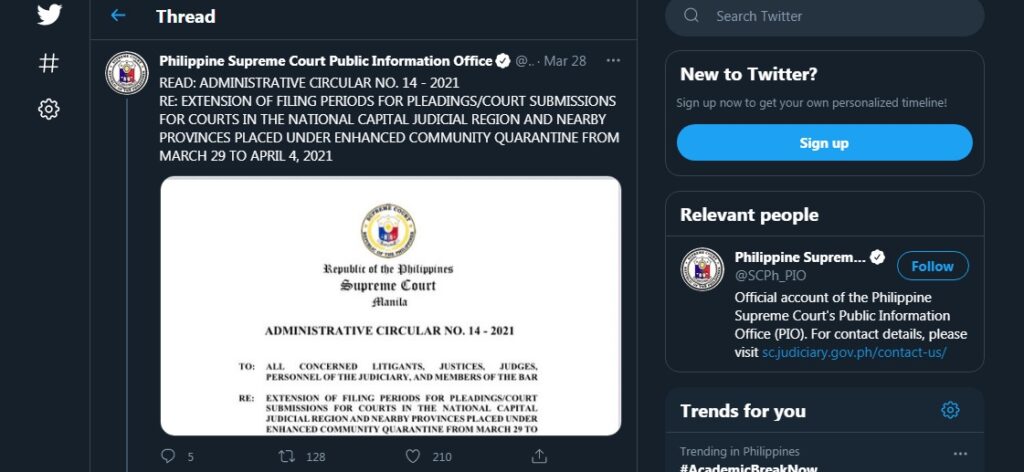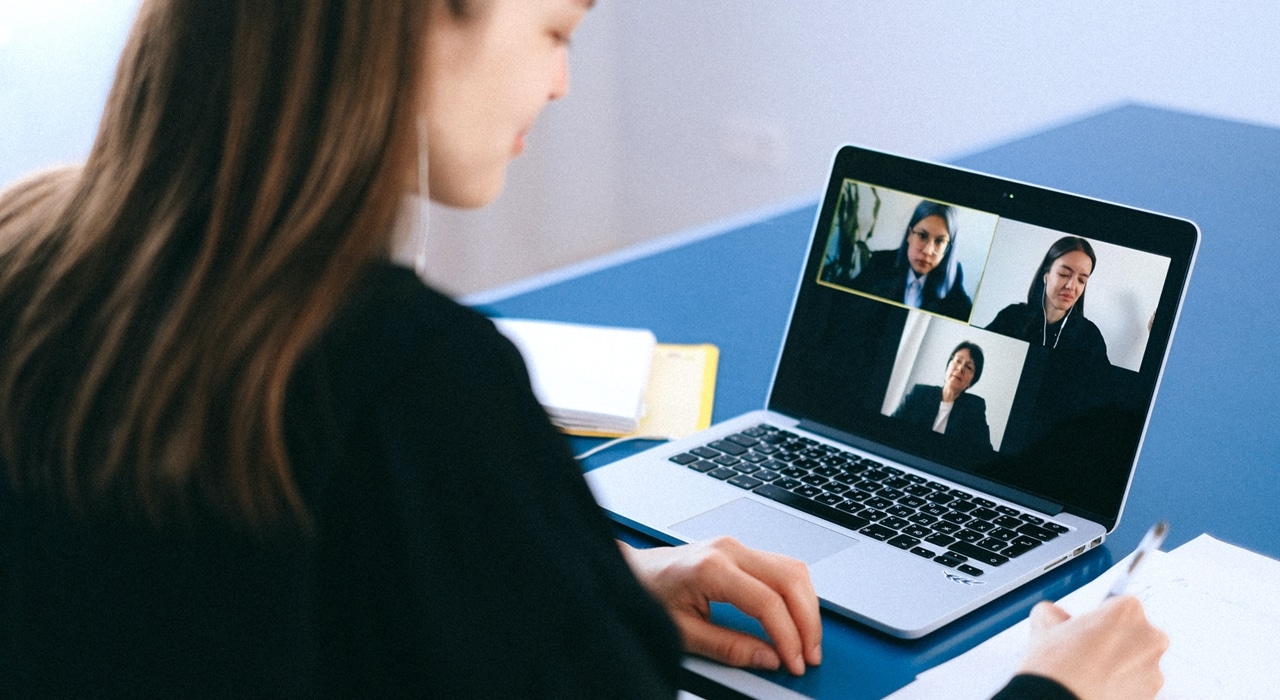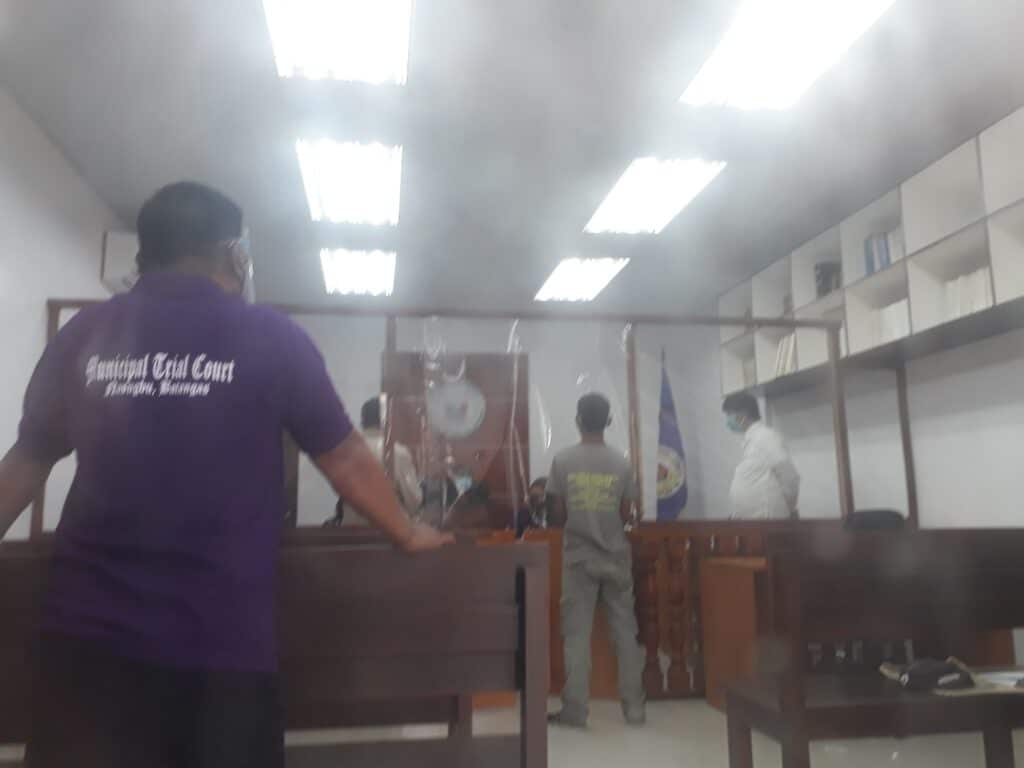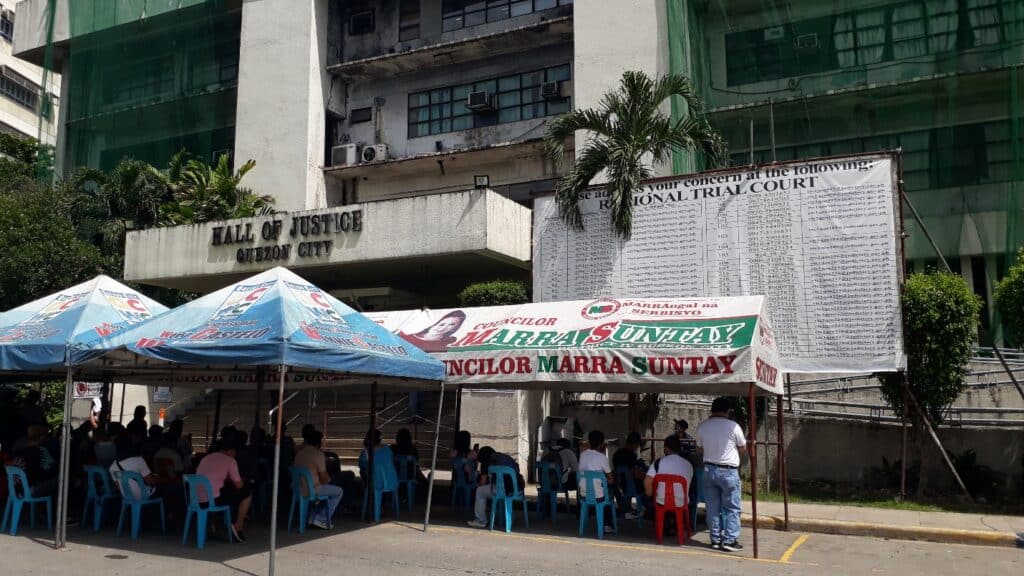Court in the Philippines in the time of the COVID pandemic

The Philippine judiciary has been greatly affected by the pandemic
It has been over a year since the Philippines underwent its first lockdown due to the COVID pandemic. In that time, the courts have had to adapt to the disruption brought by a virus that spreads through social contact.
This has been a challenge for courts which, pre-pandemic, typically had packed galleries reflective of their congested dockets, often dealing with dozens of hearings each day.
Early on, there was a spate of court closures for days and weeks while the Supreme Court developed the processes through which the trial courts could function despite the pandemic. The usual protocols of limiting physical presence, enforcing masks, and social distancing were quickly adopted.
Still, even when courts began to reopen for business, it became a fixture in lawyers’ newsfeeds to be advised of the cancellation of court hearings in a city or provincial courthouse due to the news that someone in the courthouse staff had tested positive for COVID, or that the courthouse would be undergoing disinfection, resulting in the cancellation of hearing dates.
Measures were gradually put in place to allow the courts to operate amidst these challenges.
Are the courts operating?

The Supreme Court of the Philippines also posts its latest announcements in social media
Yes. Like many courts around the world, those in the Philippines were interrupted again and again as a result of the virus, but measures are in place for the courts to function.
Court trials where witnesses and evidence are presented continue, as do the courts’ issuance of written orders and decisions. Cases continue to be heard through a mix of personal and online appearance. Civil and criminal cases are both heard, with a priority given to criminal trials where the accused is detained.
How are trials conducted during the pandemic?

Video conference court hearings can be requested by filing a motion with the court.
In person court hearings are still held, but not exclusively. Upon motion by one of the parties, the proceedings may be conducted via video conference. Lawyers and witnesses may appear before the court even if not physically present in the court room.[1]
The mandatory, court annexed mediation conferences meant to encourage settlement among the parties are similarly affected. Reliant as these are on rapport built from face to face meetings, the Supreme Court has allowed even mediation to be conducted via video conference, provided that the confidentiality of proceedings is ensured.[2]
There are other changes to how courts operate compared to the year before the pandemic. Some are similarly provided for by new rules of procedure while others are more ad hoc and particular to specific courthouses.

Barriers are put in place to guard against the virus.
In person court hearings are very controlled. Physical distancing, masks, and face shields are a given. Transparent barriers are typically installed between seats and desks. During hearings, the people inside the court rooms are limited to only those involved in the particular case being heard at that moment, with the rest waiting their turn outside.
The very checking of court records, routine prior to all this, has been complicated by the new normal. What used to be a simple matter of visiting a court’s record room to ask for the case file is now regulated and limited because of the pandemic. Now, it is not unusual that the law office must call ahead to coordinate and meet with the court staff outside the lobby of the Hall of Justice where the latter will bring down the case file for perusal rather than allow the lawyer or paralegal to come up.

Litigants waiting to be called in from outside the Hall of Justice.
Revisions to the Rules of Court,[3] which were drafted prior to the pandemic but which came into effect during, have also affected the conduct of trial. Initiatory pleadings in civil cases must now include the judicial affidavits of the intended witnesses, along with the exhibits/evidence that the plaintiff intends to present. This means that the entire case must be ready for the presentation of evidence upon filing, compared to the under the previous rules where these affidavits and exhibits could be drafted up to and even after pre-trial. The effect has been to greatly facilitate trial itself because there is less occasion to grant postponements to one of the parties asking for more time to prepare after a case has been initiated.
[1] Supreme Court Administrative Matter No. 20-12-01-SC (Re: Proposed Guidelines on the Conduct of Videoconferencing) dated December 9, 2020.
[2] Supreme Court Office of the Court Administrator, OCA Circular 127-2020, August 10, 2020.
[3] 2019 Proposed Amendments to the 1997 Rules of Civil Procedure, A.M. No. 19-10-20-SC.
How has this affected how long cases take?

Skeletal work schedules affect the efficiency of the court
There were understandable teething problems as the courts adapted to mixed and online hearings. Some courts took months before they fully implemented the Supreme Court circulars or even allowed trial by video conference, citing the inadequacy or absence of internet connections (since remedied in many courts).
Still, as everyone has experienced in the past year, remote coordination of multiparty conferences does not always go smoothly. During video conference court hearings, it may be that only court staff is actually physically present inside the court room. The judge herself may be hearing the case from home. The witness may be appearing from his home or be seated near the lawyer in the latter’s office. Opposing counsel will be at his own office. Each of these are possible points of technical failure which can interrupt trial and the smooth presentation of evidence.

Some technical problems are funnier than others.
A trial judge exclaimed in one such remote hearing that it took them twice the amount of time to conduct a hearing as it previously did, but lawyers and the court have gotten better at this since. Remote trial is in any case better than no trials being conducted at all.
Of course, though lawyers and witnesses may appear remotely, certain aspects of trial such as the comparison of original exhibits ultimately require personal, scheduled appearance at the courtroom by counsel or legal staff. These can be done under the controlled circumstances adverted to earlier.
Recurring spasms of government-imposed lockdowns and the closure of court houses still occur, resulting in rescheduling and interrupting the courts’ issuance of orders and resolutions. Such delays are in a sense unavoidable until the pandemic as a whole is brought under control.
Nonetheless, courts in the Philippines continue to conduct their business, cases moving forward even as they must adapt to challenges because functioning courts are necessary for an orderly society.






0 Comments